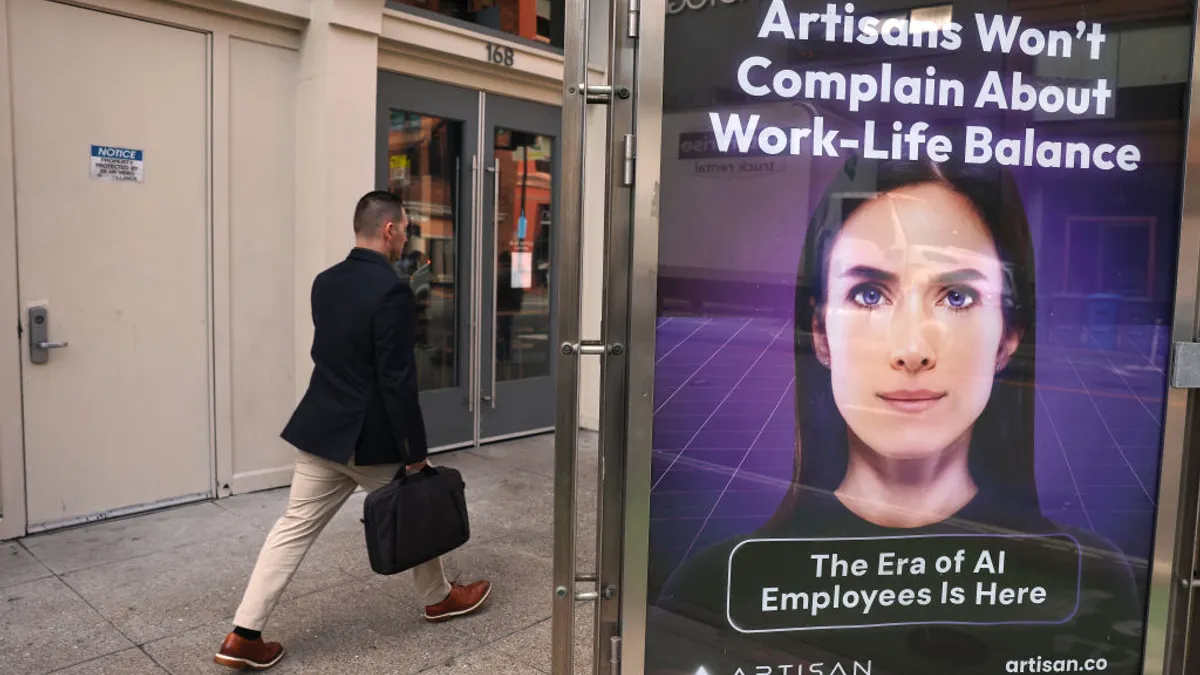The dog-eat-dog world of hiring is pushing hiring pros to look for new ways to source and acquire talent. Recruiters are getting creative with new ways to apply, streamlined screening processes and AI that schedules and even initiates a chat.
For some, success is the reward for innovation; for others, old snags and problems persist, stifling their efforts no matter what they try. Candidates no longer tolerate lags or red flags anywhere in the process: Applications must be quick, seamless and painless. If recruitment doesn't work like a well-oiled machine, experts suggest taking a look at whether you may be making some common mistakes — and offer solutions for avoiding them.
Posting
1. Missing the Goldilocks zone
If your postings read like War and Peace, it's a safe bet no one will get through the first paragraph, much less the entire novel. If they're too short or too vague you're likely getting an avalanche of candidates that don't fit the bill. Postings are not job descriptions, which can be lengthy and detailed. But postings need to be concise, interesting and, most of all, motivate the right candidate to apply. As Goldilocks would say, they need to be "just right."
A job posting should be exciting, fresh and brief, Amy Polefrone, president and CEO of HR Strategy Group, LLC told HR Dive via email. "Candidates are usually looking at jobs on their smart devices — and they have a shorter attention span. She recommends working with your marketing team to create postings. After all, "you are selling the company and its products," she said, adding that a posting should be an extension of the company and the products or services it sells.
2. Getting the name and location wrong
"A common mistake that recruiters make is using ... vague, irrelevant or non-standard job titles," Mark Masterson, VP of talent acquisition and delivery at Yoh told HR Dive. Instead, he suggested recruiters think about what a candidate would be searching for, rather than company-specific jargon.
Another common mistake, Masterson said via email, is posting a job ad to the wrong site, whether one that's not relevant or one where it can get easily lost in the shuffle.
3. Working with old tools
Crafting a posting from an obsolete (or over-reaching) job description is certain to net you bad results. "Really question whether or not the job you are trying to fill really requires the candidate to have an MBA or even a college degree," Gretchen Van Vlymen, VP of human resources at StratEx writes. "You may be alienating yourself from good workers if you automatically require a higher education degree without really thinking through whether the job truly requires that."
Kurt Smith, founder and CEO of Recruitsy agrees. Too often recruiters don't take the time to really understand the needs of the opportunity and position, he said. Or they ask for skills and talents that simply don't exist (or don't exist in today's market). They won't be successful, he told HR Dive in an email, when "they re-use job description templates for purple squirrels and unicorns."
Screening
4. Holding out for a perfect fit
How often are you really going to get an exact match for the opening you post, particularly in today's tight market? Masterson said that hiring managers often make the mistake of being too narrow in their search. "They look for the perfect fit rather than a person with the aptitude to stretch and grow into the role. These people are often better than those so-called 'perfect' candidates anyway."
5. Minding the gaps
Too many employers look at employment gaps as an automatic disqualification, said Van Vlymen, but "there are a lot of valid reasons why good candidates take breaks. Some of this real-life experience can actually lend itself to common competencies required for certain positions like time management, multi-tasking, project management, etc."
6. Skipping the phone screen
Whether you merely find out the candidate is still available or are able to go deeper, phone screens are worth the time, experts say. "Phone screens are a great first line of defense to help save time during the whole process," said Van Vlymen. They can help filter out the candidates that aren't the right fit right off the bat and do a quick assessment of communication skills and basic criteria like hours available, certifications and more.
And if you truly don't have for an initial phone screen, consider letting chatbots do some of the work for you.
Interviewing
7. Winging it
Polefrone advises everyone in the recruitment process to be prepared to make a good impression. "Have pre-developed interview questions," she said, "and let the hiring managers have these in advance." This is your chance to show how organized of a company you are, she adds. "Employers need to 'strut [their] stuff' during interviews," she said.
8. Not preparing the candidate
Masterson said that adequately preparing the candidate for the final interview is the most critical task in the process, "and it's something many recruiters don't do well enough or don't do at all."
Overall, he said, the entire process should be as predictable as possible for the candidate. They should feel comfortable knowing the process, next steps and what to expect from the interviewer, but often recruiters fail to set the right expectations on communication with the candidate.
9. Ignoring unconscious bias
If you knew you were doing it, it wouldn't be unconscious. But Van Vlymen says you can acknowledge the existence of bias; "It is in our nature to gravitate toward those who are like us. Acknowledge that there may be unconscious bias and work actively to think outside the 'box' looking for candidates who fit the overarching company values, but also bring something new to the table via their background, their experience, their language, etc."
Consider your reasons to exclude: Are they generic like "culture fit," or "overqualified?" Make sure any reason you use to eliminate a candidate from consideration is rooted in subjective, measurable criteria.
The Process
10. Forgetting that candidates are customers
It's a buyer's market and a laundry list of requirements isn't going to entice job seekers. What you want from them must be artfully camouflaged around what they can expect from you. But, Masterson added, "It shouldn't just be about the money or the role but also about selling them on growth opportunities, the company and the culture as well."
Smith said that as he interacts with large numbers of recruiters, they either view candidates as customers or they don't — and at their peril. "When a candidate isn't treated with the respect as a potential customer, the candidate experience fades. But so does the recruiter's reputation." The best recruiters, he said, value all interactions with candidates, develop strong relationships and build future business with referrals.
11. Sending them packing
A long or complex application process can translate to lost applicants. Polefrone recommends applying yourself: "To test a client's application process, I went through an application process this morning — and it took me 15 agonizing minutes to apply for the job (and I skipped a lot of steps)." It shouldn't be painful for someone to just talk to you, she said.
12. Snoozing on the job
Candidates are being swept up faster than recruiters can schedule them for phone screens. And the ones who get past that point are vanishing (ghosting, if you will) at an equally alarming rate. Keeping on top of every viable candidate means communicating quickly and routinely; it's a lot harder to ghost a recruiter with whom you have a solid personal connection.
Post-interview
13. Skipping reference checks
Passing on reference checks is a big mistake, experts say. Masterson recommends doing more than checking a box: "Ask in-depth questions about a candidate's personality, character, and drive. Discover important projects the candidate played a part in, and see what their role was in its success."


















